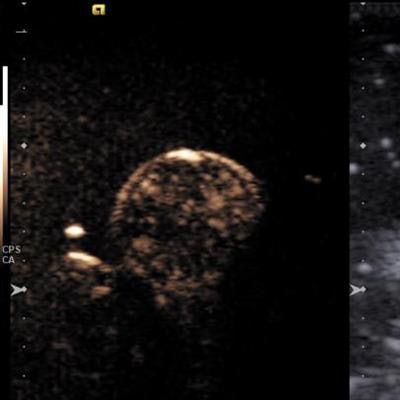
Injecting breast cancer with oxygen-filled microbubbles makes tumors three times more sensitive to radiation therapy, according to results from an animal study published online January 21 in the International Journal of Radiation Oncology, Biology, Physics.
The technique also improved survival outcomes, wrote a team led by John Eisenbrey, PhD, from Thomas Jefferson University in Philadelphia.
Microbubbles were originally developed to help improve ultrasound imaging. The idea of "popping" oxygen-filled microbubbles in tumors with ultrasound suggested a technique that could make radiation therapy more effective: Most solid tumors are deficient in oxygen, which also makes them resistant to radiation, according to the researchers.
Eisenbrey's group found that popping the microbubbles with ultrasound prior to radiation treatment tripled the cancer's sensitivity to radiation. It also almost doubled the survival time in mice, from 46 days with placebo, nitrogen-filled microbubbles to 76 days with oxygen-filled microbubbles.
 A round breast tumor with oxygen microbubbles spread throughout (gold dots or clouds) in an animal model of the disease. Image courtesy of the John Eisenbrey lab at Thomas Jefferson University.
A round breast tumor with oxygen microbubbles spread throughout (gold dots or clouds) in an animal model of the disease. Image courtesy of the John Eisenbrey lab at Thomas Jefferson University.Eisenbrey and colleagues are using a similar approach in a human clinical trial evaluating radiation therapy for liver cancer. Although the microbubbles are not filled with oxygen in this new study, the hypothesis is that popping them will create enough disruption to the tumor to add therapeutic benefit over radioembolization alone, the group said.



















